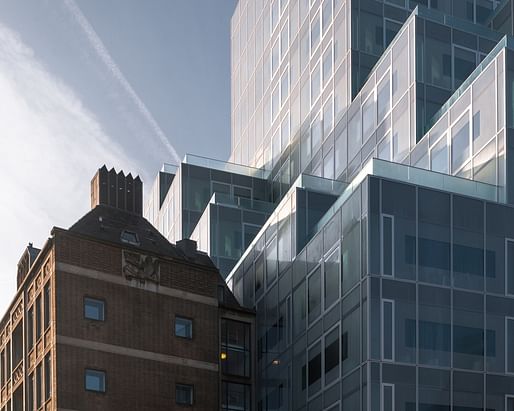

In his book Four Walls and a Roof – The Complex Nature of a Simple Profession, Reinier de Graaf paints an honest picture of what it is like to work as an architect today. De Graaf, who is a partner at OMA and director of AMO, the office’s think tank, provides engaging stories about the banal, everyday reality of working for an acclaimed firm. — Failed Architecture
When pursuing a life of architecture, it's hard not to become jaded by the peculiarities of the profession. A career path not for the faint of heart: architects often dream of using their skills to "change the world." However, as mystical and alluring the profession may appear to be, architects like Reiner de Graaf have expressed strong perspectives on the profession.
A partner at OMA and director of the firm's think tank AMO, de Graaf sheds some light on the profession in his book Four Walls and a Roof - The Complex Nature of a Simple Profession. Two years after its publish date, do de Graaf's assertions about the profession still remain true? Having re-read his article and interview coverage by fellow Archinect senior editor Orhan Ayyüce, it begs me to question: Has this sense of denial grown stronger? Have newly licensed architects taken on this method of thinking?
de Graff expresses in the interview, "I see the way people look at us, and I know the assumptions about the nirvana that we inhabit, but that’s just not the case. Our daily reality is also tainted by very banal setbacks, by very mundane, and sometimes quite deflating behavior on the part of clients or the world at large."
"My recommendation is that architects become more aware of the context in which they work and take more time to look around at the world that asks them to do what they do so that they can for instance recognize the motives behind it."
2 Comments
Personally I would have liked to hear the author's take. I had a moment where I thought I somehow accidentally skipped paragraphs only to scroll back up and realize, nope, it's just questionably short article. I'll know where to blame my future trust issues on...
I think the most revealing aspect of the state of architecture's impact on society is de Graaf's realization that a majority of OMA's projects are constructed for authoritarian or non-democratic governments. If we're talking about architecture having the possibility to transform culture in the space of a free-market system, then we need to focus on producing better building products than the industry creates on their own rather than giving endless credit to design firms like OMA that still work unpaid interns and wind up hiring executive architects to do their CD's.
Block this user
Are you sure you want to block this user and hide all related comments throughout the site?
Archinect
This is your first comment on Archinect. Your comment will be visible once approved.